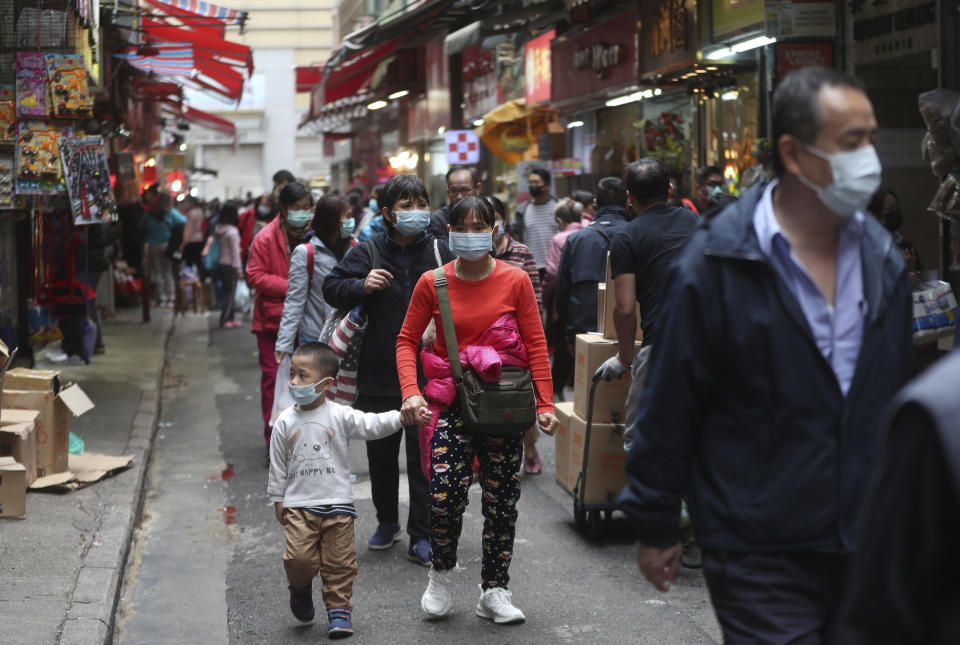Coronavirus fears could trigger a 10% to 20% selloff in the stock market: strategist
The economic wildcard that has become the coronavirus may not yet be done wreaking havoc on global stock markets. In fact, things could get much worse before they get better.
“In a worst-case scenario, global equities could fall by as much as 10% to 20% before recovering,” cautions Invesco chief markets strategist Kristina Hooper. “The longer the coronavirus spreads without government authorities being able to slow its spread and stabilize the contagion, the more impactful it will be to economies and markets.”
As of Sunday afternoon, the World Health Organization (WHO) said the confirmed number of coronavirus cases stood at 14,557 worldwide. The death toll has risen to at least 304.
Equities — and other risk assets — around the world have begun to bear the brunt of the escalating health crisis.

The major U.S. stock indices finished January lower, giving up what had been an impressive start to the year earlier in the month. Last week, stocks had their largest one-week declines since Aug. 2. Copper prices have tanked about 10% dating back to Jan. 16. Oil prices have plunged so quickly that OPEC is rumored to be eyeing an output cut soon. The iShares MSCI China ETF has nosedived 10.9% from Jan. 17.
Tech stocks have started to lose buying momentum despite blowout earnings reports from Microsoft and Apple, points out SunDial Capital Research.
Such bearish market action has triggered red flags among many closely watched indicators. The yield curve inverted Thursday for the first time since October, mostly as investors have flocked to safe-haven Treasuries. Unleash those long format recession fears. Jefferies notes flows into small-cap ETFs — used a proxy on the outlook for U.S. focused companies — have turned negative.
‘Impossible to assess at this stage’
Investors are right to be cautious on stocks right now.
Estimating the impact on global growth from the second largest economy in China being virtually at a standstill is next to impossible. Goldman Sachs strategists took a shot at it, however. China’s GDP growth this year could be cut by 0.4% due to the coronavirus, Goldman says, similar to their estimate for the U.S.
Both numbers — which are in line with what many strategists on the Street are projecting — seem ridiculously low. The market is starting to sniff that out, notably China’s GDP slipping below the key 6% level in the first half of 2019. Growth estimates stand to be marked down further should factories in China not re-open by Feb. 9 as planned.
“The economic impact remains impossible to assess at this stage,” says UBS Wealth Management chief economist Paul Donovan. “Three structural changes create economic uncertainty. We must wait for a proper economic assessment of the costs: 1) the rise of online spending, limiting consumer damage; 2) the rise of social media, spreading fake news and fear further and faster; and 3) the rise of China's share of global manufacturing, potentially increasing supply chain disruption.”
Factor in an over-owned market after 2019’s epic run — one crowded into cyclical stocks thanks to an easy money Fed — and the sense is that more air needs to be let out of the valuation balloon before buyers should step in. Coronavirus isn’t just an excuse to sell stocks, it’a a driver of real tangible risk to corporate financials. Markets must adjust for that.
“Looking back at this bull market, the second strongest and longest in history, there have been 19 pullbacks of at least 5%. Every one of them came with uncertainty and bad news. What is noteworthy is into the recent high on January 17, the S&P 500 had gone 156 days without a pullback. That is very close to the average time of 161 days between pullbacks since this bull market began,” notes SunTrust chief markets strategist Keith Lerner.
Adds Lerner, “The corrective period in price and/or time likely needs to run its course.”
Brian Sozzi is an editor-at-large and co-anchor of The First Trade at Yahoo Finance. Watch The First Trade each day here at 9:00 a.m. ET or on Verizon FIOS channel 604. Follow Sozzi on Twitter @BrianSozzi and on LinkedIn.
Read the latest financial and business news from Yahoo Finance
4 major concerns investors have about the stock market in 2020
Trump's tax plan will hurt restaurants again in 2020: Dunkin' chair
Beyond Meat founder: things are going very well with McDonald’s
Starbucks CEO on what China has in store for the coffee giant
Follow Yahoo Finance on Twitter, Facebook, Instagram, Flipboard, SmartNews, LinkedIn, YouTube, and reddit.
